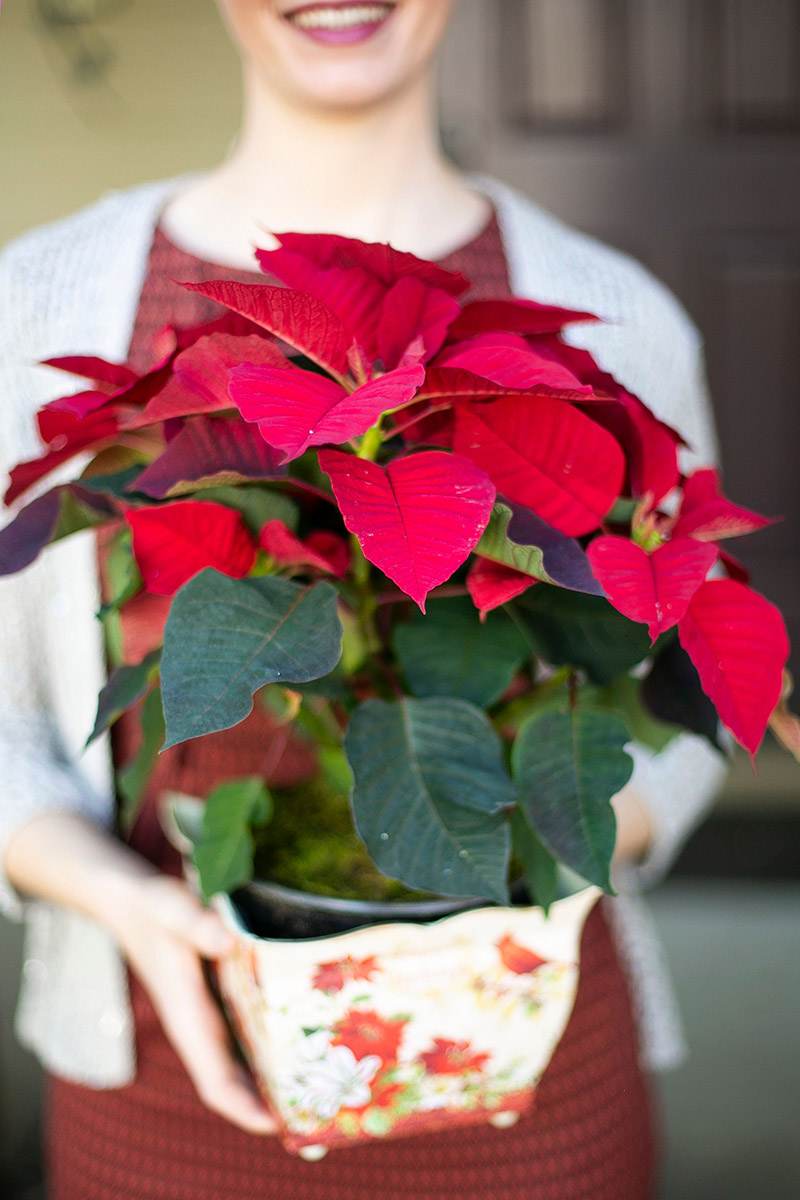Top 10 Poinsettia Facts
Learn more about the popular holiday plant, including what colors it comes in and its fascinating history.
Dec 05, 2019
Holiday decorating is one of the best things about Christmas. The lights, the wreaths, the tree...they all combine to make one big festive display in — and out of — our homes.
But there's one element that can take your decor from ordinary to extraordinary: a poinsettia plant!
Poinsettias are one of the most popular flowers associated with Christmas. Since poinsettia displays are so prominent this time of year, you should take a minute to get to know more about this plant that embodies the holiday season.

Poinsettia facts
- A poinsettia plant’s botanical name is “euphorbia pulcherrima,” which translates to “very beautiful.”
- Joel Roberts Poinsett, the first U.S ambassador to Mexico and a U.S congressman, is credited as the person who introduced poinsettias to the United States, after discovering them in Mexico.
- Poinsettias were given the name “poinsettia” by William Prescott. After learning the story of Poinsett’s findings, Prescott renamed the plant after him.
- Speaking of Poinsett, Dec. 12 is known as Poinsettia Day in his honor; Dec. 12 is the day that Mr. Poinsett died.
- The red blooms we see on poinsettia plants are actually not flowers; rather, they are known as bracts. By definition, bracts are simply modified leaves. The actual “flower” on a poinsettia plant is the yellow bloom found at the center of the bracts.
- Poinsettias come in over 100 colors. While prestige red is the most common, you can also find plants whose bracts are white, pink, and even gold!
- The color of poinsettia leaves is actually determined by how much light the plant gets. For red leaves, the plant needs must get bright light during the day and no light at night (for at least 12 hours).
- The majority of poinsettias found in the U.S. are grown and produced in California.
- Though they are most commonly seen around the holidays, poinsettias can bloom again after the season is over, which makes them perennials. However, getting them to do so requires a ton of care throughout the spring and summer.
- Contrary to popular belief, poinsettias are not poisonous. Research shows that a child would have to eat more than 500 poinsettia leaves in order to experience really serious effects — but that's not to say they're completely harmless. To be safe, it's best to keep poinsettias away from children and pets.









